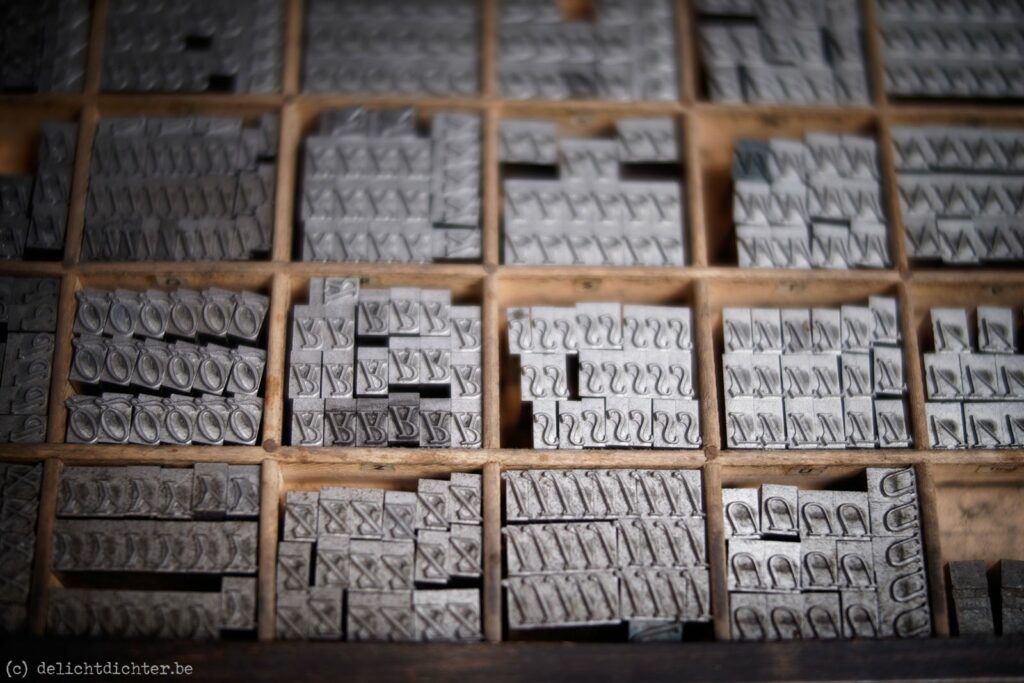Developments and impact of technological innovation in the nineteenth century Belgian Printing Industry’
‘The nineteenth century was the century of the book’, and this was possible through the simultaneous developments in the field of production, distribution and consumption of printed matter. In this investigation the first of these deciding factors will be examined: which industrial technology innovated the print industry during the long nineteenth century in Belgium? Which new structures can be defined in the field of type casting, type setting and printing, and what was their impact on the different sectors]of the print industry like type design, book illustration and bookbinding?
In book historical publications, the nineteenth century developments in the printing industry usually gets a lot of attention. But the unremitting mechanization of the industry often lead to the conclusion that there was a ‘ second revolution of the book’ (after the first revolution took place in the era of Gutenberg around 1450) which is a simplification. In this representation the old wooden press ‘could ‘ finally be replaced in the nineteenth century by new technology and machinery, which caused a radical rupture with the old ‘typographical ancien régime’. There is however reason to hypothesize that this ‘revolution’ was far more gradual than is presently assumed, and that traditional techniques remained much longer in use than suspected.





In addition to that there is a linear vision on the introduction of new printing technology which believes they were initially imported from England in a pure receptive way by the printing industry on the continent. By focusing on the Belgian situation this model can be corrected. One of the hypothesis of this research is that the continental importers where very creative with the new technology, improved it and tried to conquer new markets with it. This can clearly be demonstrated with the Belgian situation, and the outline of this research is to map these developments.
Based on the theory of Barbier (1990) this research project approaches the whole of the printing industry and its machinery as a ‘technical system’, that supersedes the individual technological innovations. The balance can rigorously be disturbed by the introduction of an single innovation, which can be a it a new machine, technique or procedure. When imbalanced the structure can restore itself by the introduction of other innovations in other parts of the system, by which the system will re-balance. These developments make the introduction of new technology a process of ‘longue durée’, which can stretch over more than a century.
The sources of this research will be (1) the actual machines, as they are preserved in some Belgian collections (industrial-archaeological research is an intrinsic part of the project) (2) archival sources, business records of the printing industry, notarial documents, government sources (statistics, industrial statistics, permits and patents…) and documents relating to industrial exhibitions; (3) contemporary publications (manuals, educational editions,…); and (4)contemporary books and ephemera .
- ‘De negentiende eeuw was de eeuw van het boek’ , Van der Weel, Adriaan, Onbehagen in de Schriftcultuur. Leesrevoluties in de negentiende en twintigste eeuw. Rede uitgesproken bij de aanvaarding van het ambt van bijzonder hoogleraar in de moderne geschiedenis van het boek aan de Universiteit Leiden op 20 oktober 2007. Amsterdam, 2007, p. 5.
- Frédéric Barbier, L’industrialisation des techniques, in, Roger Chartier en Henri-Jean Martin, Histoire de l’édition francaise,3. Le temps des éditeurs. Du romantisme à la belle époque, Fayard, s.l., 2e uitg., P. 51.